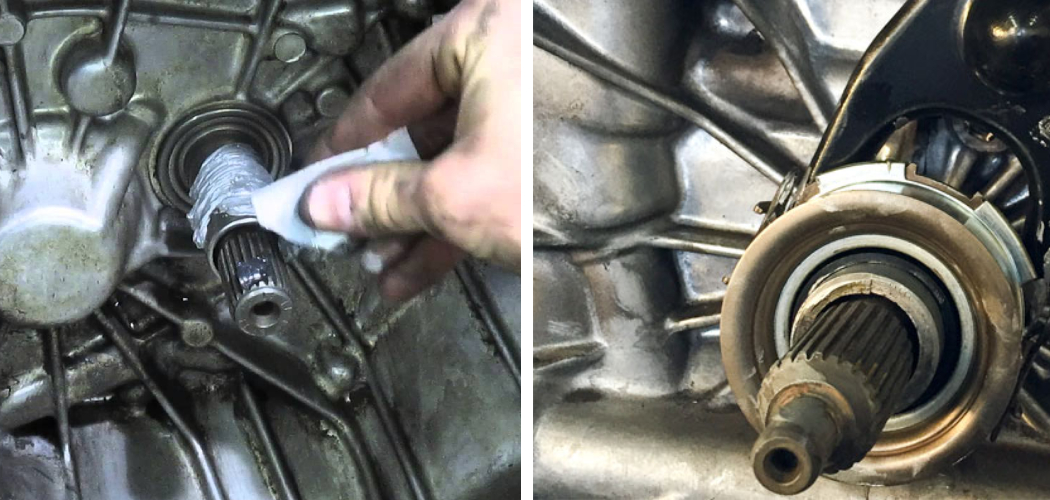Jeep aficionados know the thrill of off-roading, their engines’ power, and a smooth gearbox’s precision. One critical but often overlooked component that ensures this harmony is the clutch. In this comprehensive guide, we dive into how to lubricate jeep clutch, sharing insights and techniques to keep your off-road beast shifting as smoothly as silk.

Whether you’re a seasoned Jeep owner or a newbie delving into the mechanics behind these vehicles, this post is your roadmap to preserving and enhancing that essential connection between your engine and wheels.
Understanding Clutch Components and Lubrication Points
A vital part of your clutch system is the throw-out bearing, which is directly responsible for clutch engagement and disengagement. However, the throw-out bearing is just one piece of a complex jigsaw. Other parts, like the pressure plate, pilot bearing, and clutch fork, equally play essential roles.
Each component requires a specific type of lubrication to perform optimally. For instance, high-temperature grease is suitable for the throw-out bearing, which often comes under intense conditions. In contrast, lithium grease may be used for the pilot bearing for its longevity and anti-corrosive properties.
The Ultimate Guide on How to Lubricate Jeep Clutch: From Basics to Advanced Techniques
1. Assessing the Need for Lubrication
Do you hear a metallic grinding noise when shifting gears? Or perhaps your Jeep seems to resist switching from one gear to another? These are telltale signs of potential clutch issues that may stem from inadequate lubrication.
Regular checks are critical, especially if you often find yourself off the beaten path. Keep a close eye on wear patterns during routine inspections, and as a rule of thumb, inspect clutch components whenever you’re changing or rotating your tires.
2. Preparing for Lubrication
Before diving into lubrication, safety must be your top priority. Get your Jeep to a level, stable surface using proper jacking techniques and secure it with jack stands. Ensure all components are cool to the touch and have all the necessary tools and materials at the ready.
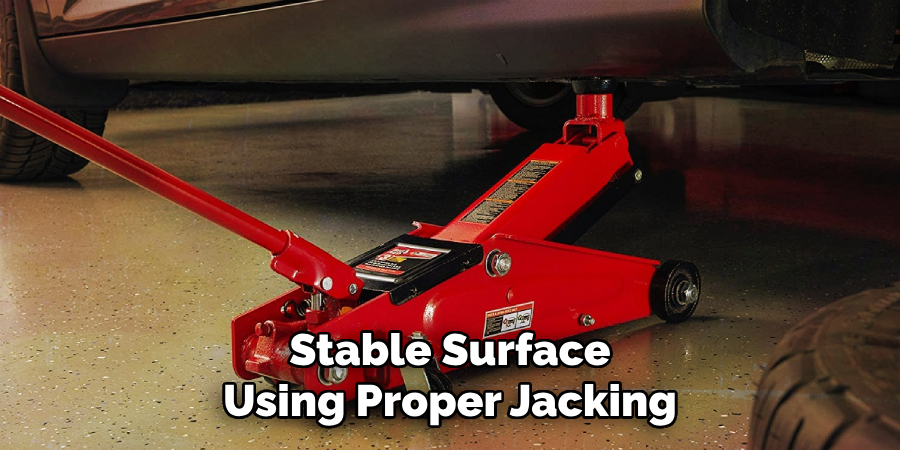
Lubricating your clutch should never be a rushed job, as skipping steps or using the wrong grease can lead to expensive consequences down the line.
3. Lubrication Procedure
With the inspection complete and safety measures in place, it’s time to apply the lubricant. You’ll need to be methodical and not miss any key points. Over-lubricating can be as harmful as under-lubricating, as it may lead to slippage and contamination of other components.
After application, clean off any excess lubricant to avoid buildup that could impact the clutch’s performance. Follow the manufacturer’s instructions carefully, and never mix different types of lubricants.
4. Advanced Techniques
If you’re a seasoned Jeep owner, you may look for ways to improve your clutch’s performance beyond routine lubrication. One such technique is using a heavy-duty pressure plate, which provides more torque and smoother shifting. Another approach is upgrading to a hydraulic throw-out bearing, which allows for easier pedal effort and quicker gear changes.
5. Sustaining Your Jeep Clutch
As with any vehicle maintenance, consistency is key. Regular inspections and lubrication will prolong the life of your clutch and keep you on the road (or off-road) for longer. However, it’s not just about frequency; quality also plays a significant role. Choosing high-quality lubricants that meet or exceed manufacturer specifications can significantly extend your clutch’s longevity.
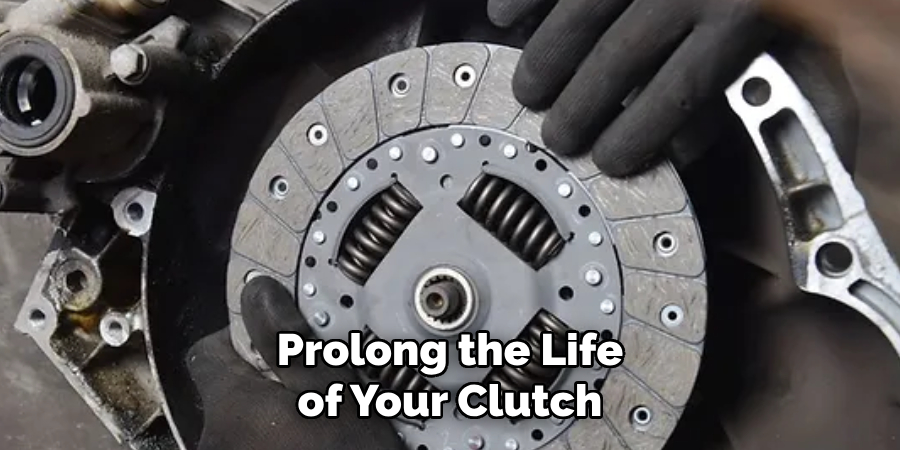
That’s it! You’ve now learned how to lubricate jeep clutch like a pro. With the right techniques and products, you can ensure your clutch performs at its best, delivering a smooth and enjoyable off-roading experience every time.
So, whether you’re tackling rugged terrain or cruising down the highway, keep that essential connection between your engine and wheels well-oiled for maximum performance. And remember, regular maintenance is key to keeping your Jeep running smoothly for years to come.
5 Considerations When You Need to Lubricate Your Jeep Clutch
When it comes to the off-roading king like Jeep, taking care of your clutch is vital to ensure a smooth and reliable ride. The clutch assembly is a complex system that requires proper lubrication to operate at its best.
This listicle will guide you through the essential factors you need to consider when it’s time to show some love to your Jeep’s most crucial link to the transmission.
1. Recognizing the Importance of Clutch Lubrication
The clutch in your Jeep transfers power from the engine to the transmission, which involves heavy friction and movement. Without proper lubrication, the clutch components can wear down quickly, leading to slippage, difficulty in gear shifting, and even complete failure. Regular lubrication ensures the clutch operates as intended, extending its life and maintaining peak performance.
2. Choosing the Right Lubricant
The type of lubricant you select can greatly affect the efficiency of the clutch. Here are some significant points to keep in mind:
Understanding Viscosity
Clutch components move in close tolerances, and using a lubricant with the wrong viscosity can impede their movement. While an extremely thick lubricant can cause the clutch to engage too quickly, a very thin one may not provide sufficient protection. Aim for a lubricant with medium viscosity for the best results.
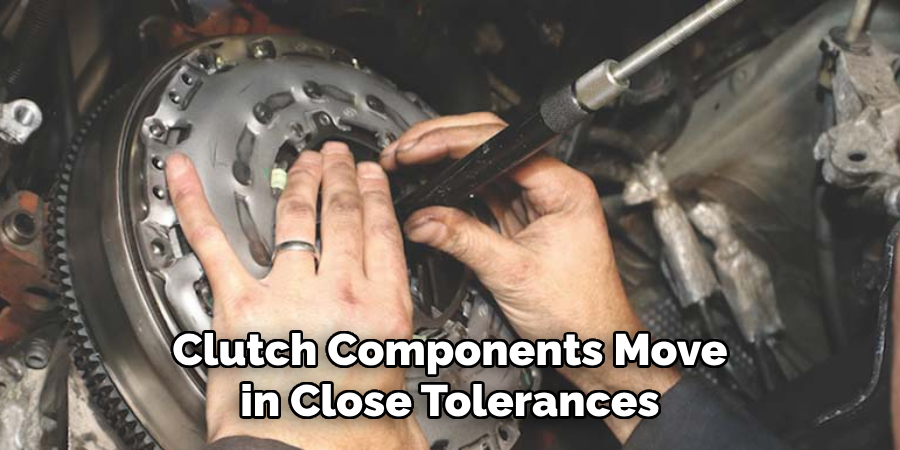
Temperature Resistance
Off-roading Jeeps often face extreme temperatures, and the clutch operates in the heart of this environment. Ensure the lubricant can withstand high temperatures without breaking down or causing excess friction.
Compatibility with Materials
Your Jeep’s clutch may have various organic, kevlar, or ceramic materials. The lubricant should be compatible with these materials to prevent damage or accelerated wear.
3. Mastering the Proper Lubrication Technique
Knowing how to lubricate the clutch correctly is as important as choosing the right lubricant. The technique involves several key steps:
Accessing the Clutch Assembly
In most Jeeps, accessing the clutch for lubrication requires removing the inspection cover. Ensure you have the necessary tools and follow proper safety procedures.
Applying the Lubricant
Apply the lubricant to the release bearing, linkage, or any other area your Jeep’s service manual recommends. Use an appropriate applicator to avoid overapplying or missing key areas.
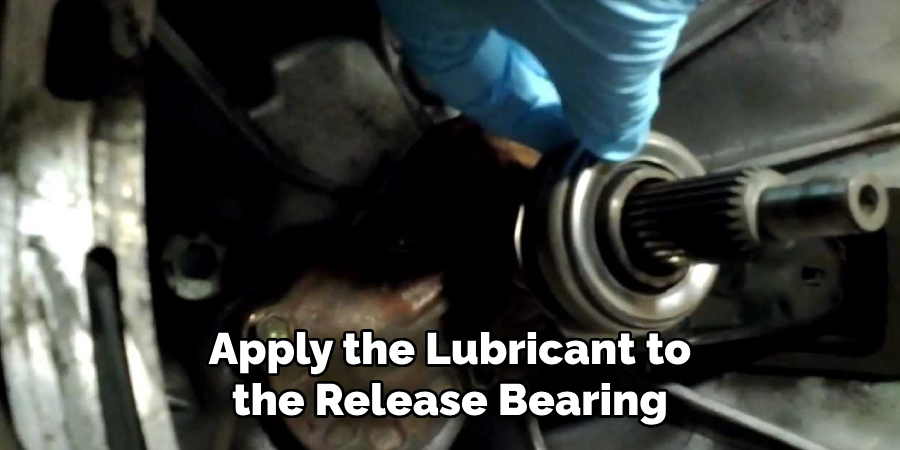
Avoiding Common Mistakes
Over-lubrication can be just as harmful as under-lubrication. Excess lubricant can attract dust and dirt, creating an abrasive paste that wears down the clutch facings. Apply the right amount, and wipe off any excess to keep the clutch clean.
4. Determining the Frequency of Lubrication
How often should you lubricate your Jeep’s clutch? The answer depends on several factors:
Mileage and Usage
If your Jeep sees a lot of off-road action or heavy towing, the clutch may require more frequent lubrication. A general rule of thumb is to inspect and lubricate the clutch every 12,000-15,000 miles.
Manufacturer’s Guidelines
Always check your Jeep’s service manual for manufacturer-recommended lubrication intervals. Jeep may suggest periodic maintenance to avoid costly repairs down the line.
5. Noticing Signs of Clutch Lubrication Issues
If your clutch isn’t lubricated properly, you’ll start noticing telltale signs such as:
Difficulty Shifting Gears
If the clutch isn’t releasing properly, it can lead to difficulty shifting gears or a stuck clutch, which is usually a sign of insufficient lubrication.
Hear Unusual Noises
A lack of lubrication can lead to more noise when the clutch engages and disengages. Any new sounds from your clutch should be investigated immediately.
Clutch Slippage
The most apparent sign of lubrication issues is clutch slipping, which means the clutch does not transmit all the power from the engine to the transmission, causing the engine to rev without accelerating the vehicle as it should.
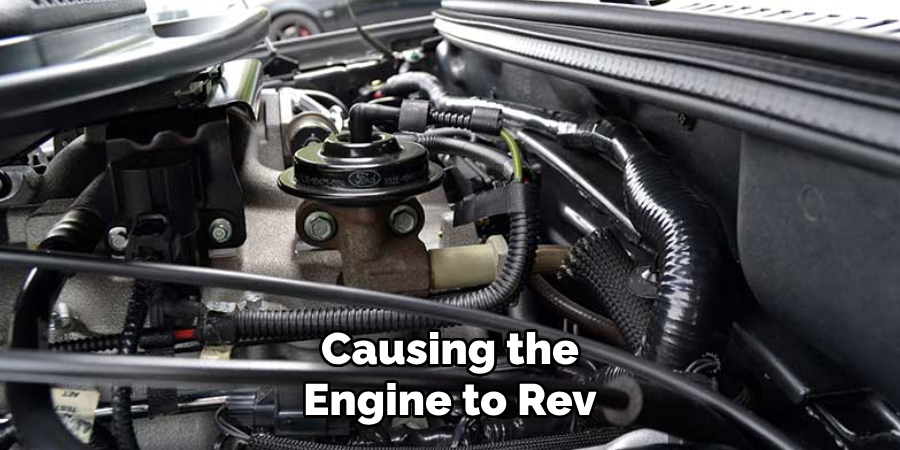
5 Benefits of Lubricating Your Jeep’s Clutch
If you’re a Jeep owner or a car enthusiast, understanding the importance of clutch maintenance can significantly affect your vehicle’s performance and longevity. Lubrication is among the indispensable steps in keeping your clutch in top-notch condition. Here are five compelling reasons why lubricating your Jeep’s clutch should roll up to the top of your to-do list.
1. Increased Lifespan
Your Jeep’s clutch is subjected to considerable stress during operation, which can lead to wear and tear over time. Lubrication, when done right, acts as a protective layer for the clutch components, leading to a longer lifespan for your clutch as a whole.
Reduced Wear and Tear
Fresh lubrication ensures that the components of your clutch do not rub against each other without any protection. By reducing metal-on-metal contact, you diminish the gradual erosion of these parts. The gear-shifting process becomes smoother, and you notice a reduced need for clutch pedal force.
Prevention of Clutch Plate Damage
A well-lubricated clutch results in a more controlled engagement and disengagement of your transmission, reducing friction. This minimizes wear on the clutch plate and prevents it from overheating, which could lead to warping and damage.
2. Smooth Gear Shifts
Unsurprisingly, a properly lubricated clutch can drastically improve the smoothness of gear changes, an often not-so-glamorous aspect of off-road driving that can make or break your experience.
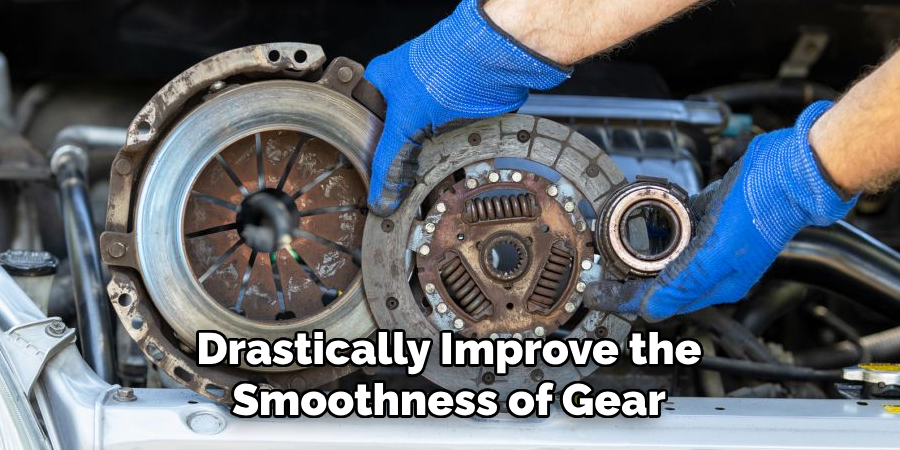
Enhanced Clutch Engagement
Proper lubrication allows the clutch to engage and disengage more efficiently. This can significantly reduce the distance the pedal needs to travel before the gear takes hold, giving you a snappy responsiveness that makes shifting gears feel like second nature.
Reduction in Gear Grinding and Slipping
Clutch lubrication diminishes the risk of your transmission ‘fighting back’ during gear shifts. Without sufficient lubrication, the gears can grind against each other instead of sliding into place, causing damage to the transmission and a less-than-smooth driving experience.
3. Improved Fuel Efficiency
A healthy clutch directly influences the overall efficiency of your vehicle’s power delivery. Ensuring that your clutch is properly lubricated promotes a more effective transfer of power, which can translate to significant fuel savings over time.
Proper Clutch Function Leads to Efficient Power Transfer
A well-maintained clutch ensures that the engine’s power is effectively transferred to the wheels through the transmission. This means less power loss during acceleration, making your Jeep operate more efficiently.
Reduced Fuel Consumption
The operation of the clutch directly affects the engine’s RPM, which in turn can influence fuel consumption. A poorly performing clutch can lead to unnecessary revving or engine braking, which wastes fuel. Proper lubrication can help keep the clutch in the sweet spot for optimal performance and fuel economy.
4. Enhanced Performance
For Jeep enthusiasts who crave enhanced off-road capabilities, a lubricated clutch is your best friend. It elevates the entire driving experience by contributing to exceptional responsiveness, torque, and control.
Better Acceleration and Responsiveness
A lubricated clutch allows for a more direct power transfer, which results in better acceleration. This is essential when you need that extra ‘oomph’ to conquer challenging terrains or when you simply want a more responsive ride on the highway.
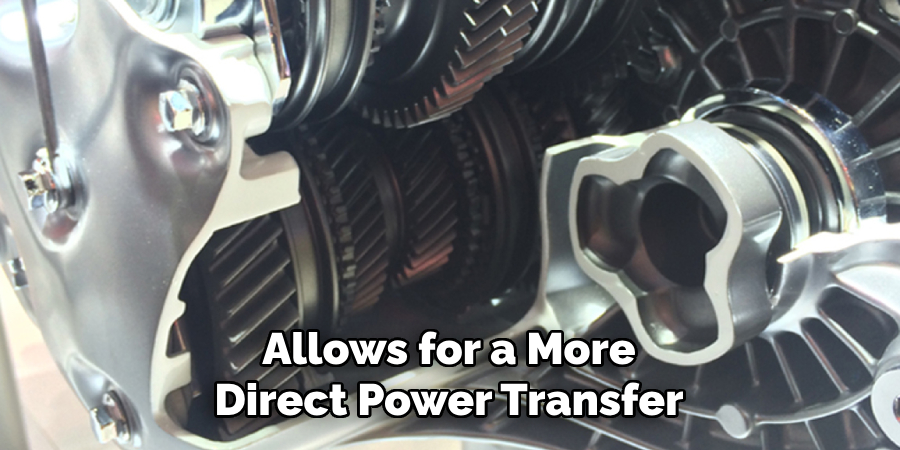
Increased Torque Delivery
Maintaining your clutch with proper lubrication ensures that the torque the engine produces is optimally distributed. This means better traction and control over the wheels, essential for off-road scenarios and heavy towing.
5. Cost Savings
Of course, one of the most compelling reasons to lubricate your Jeep’s clutch is the financial benefit. Regular lubrication can help you avoid the costly chore of replacing your clutch sooner than necessary.
Avoidance of Costly Clutch Repairs
A well-lubricated clutch is less prone to wear and damage, which means fewer visits to the mechanic for clutch-related issues. Repairs and replacements for these components can be expensive, so this preventative measure can save you significant money in the long run.
Longer Intervals Between Clutch Replacements
With all the combined benefits – longer lifespan, smooth gear shifts, improved fuel efficiency, and better performance – your Jeep’s clutch may outlast its expected operating time. Lubrication can extend the time between clutch replacements, giving you additional years of trouble-free driving.
6 Common Mistakes People Make When Trying to Lubricate Jeep Clutch
Now that the benefits of lubricating your Jeep’s clutch are clear, it’s time to brush up on some common errors people make when undertaking this crucial maintenance step.
1. Using The Wrong Lubricant
Not all lubricants are created equal. Some may be too thin or thick to adequately protect your Jeep’s clutch components. It’s essential to use the proper lubricant recommended by your vehicle manufacturer to avoid any potential damage.
2. Over-Lubricating
While ensuring that all the necessary components are adequately lubricated is essential, over-lubrication can cause just as much harm as under-lubrication. Excess grease or oil buildup can attract dirt and grime, increasing friction and potential damage.
3. Not Cleaning The Clutch Surface
Before lubricating your Jeep’s clutch, thoroughly cleaning the surface is vital. Any residual dirt or debris can contaminate the lubricant, causing unnecessary wear on the clutch components over time.
4. Neglecting Other Components
While clutch lubrication primarily focuses on the clutch plate, it’s crucial to also check and maintain other related components such as bearings, linkages, and pivot points. Neglecting these areas can lead to uneven wear and subpar performance.
5. Using Too Much Force During Application
Applying lubricant requires a gentle touch. Too much force or pressure can damage seals or cause oil or grease to enter areas where it shouldn’t, leading to potential issues.
6. Not Following the Recommended Maintenance Schedule
Finally, one of the most common mistakes people make when lubricating their Jeep’s clutch is not following the manufacturer’s recommended maintenance schedule.
Neglecting regular lubrication can lead to premature wear and tear on your vehicle’s clutch, potentially resulting in costly repairs or replacements. So remember to follow the recommended schedule for your vehicle to keep your Jeep’s clutch running smoothly and efficiently.
Frequently Asked Questions About Jeep Clutch Lubrication
Q: How Often Should I Lubricate My Jeep’s Clutch?
A: Refer to your Jeep’s owner manual for the manufacturer’s recommended lubrication interval. If there is no specific recommendation, lubricating the clutch with every oil change or at least once a year is a good rule of thumb.
Q: What Signs Indicate that My Clutch Needs Lubrication?
A: Warning signs include a squeaking or grinding noise when the clutch pedal is pressed, difficulty in shifting gears, or a feeling of stickiness or resistance on the clutch pedal.
Q: Can I Use Any Type of Lubricant on My Jeep’s Clutch?
A: It is crucial to use only the type of lubricant specified by your Jeep manufacturer. Incorrect lubricants can cause more harm than good by breaking down existing lubrication, attracting dirt, or becoming too sticky.
Q: Is Clutch Lubrication Something I Can Do Myself, or Should I See a Mechanic?
A: If you’re comfortable with basic vehicle maintenance and follow the instructions carefully, you can lubricate your clutch yourself. However, if you’re unsure, it’s better to seek the services of a professional mechanic to prevent any potential damage.
Q: What Is the Cost of Professional Clutch Lubrication?
A: The cost may vary depending on your location and the service provider. However, typical lubrication service could range from $50 to $100. Always confirm with your servicer beforehand to get an accurate estimate.
Conclusion
As we conclude this exhaustive journey through the world of clutch lubrication for your Jeep, remember that your clutch is more than just a mechanical part; it’s an essential link in the rugged chain that defines the Jeep experience. By taking the time to learn and apply these techniques, you’re ensuring a smooth ride and building a deeper connection with the vehicle you love.
Whether you dive into a complex lubrication job or prefer leaving it to the experts, the key is to always stay informed and maintain a proactive approach to clutch care. With each shift, you breathe new life into your Jeep — make sure every gear counts. Thanks for reading our post about how to lubricate jeep clutch.

